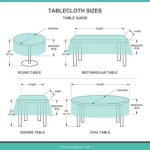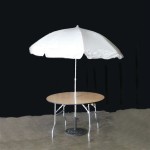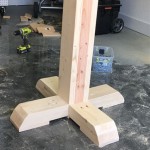Best Vegetables To Grow In Pots
Container gardening presents a feasible solution for individuals with limited space, challenging soil conditions, or those seeking a more controlled growing environment. Many vegetables thrive in pots, offering the opportunity to cultivate fresh produce within a confined area, such as a balcony, patio, or even a sunny windowsill. Selecting the right vegetables and providing appropriate care are crucial for a successful container garden. This article explores a range of vegetables ideally suited for container cultivation, offering guidelines for their optimal growth.
Root Vegetables in Containers
While often associated with in-ground cultivation, certain root vegetables perform remarkably well in containers, provided the pot is sufficiently deep to accommodate their root development. Carrots, radishes, and beets are excellent choices for container gardening.
Carrots: Selecting shorter, round varieties such as 'Thumbelina' or 'Parisian' is recommended for container gardening. These varieties require less depth compared to longer, traditional carrots. A container at least 12 inches deep is generally sufficient. Ensure the potting mix is loose, well-draining, and free of stones to prevent misshapen roots. Carrots require consistent moisture and should be thinned after germination to provide adequate spacing between plants, typically 2-3 inches apart.
Radishes: Radishes are among the fastest-growing vegetables, making them ideal for container gardening. They mature quickly, often within a month. Choose a container at least 6 inches deep. Radishes benefit from regular watering to prevent them from becoming overly pungent. Succession planting radishes every two weeks ensures a continuous harvest.
Beets: Similar to carrots, beets benefit from a deep container, at least 12 inches, to accommodate their root growth. Both the beetroots and the beet greens are edible, providing a dual harvest. Thinning is essential to prevent overcrowding. Provide consistent moisture and avoid letting the soil dry out completely. 'Baby Beet' varieties are particularly well-suited for container gardening.
Leafy Greens for Container Gardens
Leafy greens are exceptionally well-suited for container gardening due to their shallow root systems and rapid growth. Lettuce, spinach, kale, and arugula are popular choices that thrive in pots.
Lettuce: Lettuce is a cool-season crop that prefers partial shade, particularly during the hottest part of the day. Loose-leaf varieties, such as 'Black Seeded Simpson' or 'Red Sails', are ideal for container gardening as they can be harvested gradually, leaf by leaf, as needed. Plant lettuce in a well-draining potting mix and water regularly to keep the soil consistently moist. Avoid overwatering, which can lead to root rot. Succession planting lettuce every few weeks throughout the growing season ensures a continuous supply of fresh greens.
Spinach: Spinach prefers similar growing conditions to lettuce, thriving in cool weather and partial shade. It requires a well-draining potting mix and consistent moisture. Choose a container at least 6 inches deep. Spinach can be harvested as young, tender leaves or allowed to mature for larger leaves. Avoid allowing spinach to bolt (flower) by harvesting regularly and providing adequate shade during hot weather.
Kale: Kale is a hardy leafy green that can tolerate a wider range of temperatures than lettuce or spinach. It prefers full sun but can also grow in partial shade. A container at least 12 inches deep is recommended for kale, especially for larger varieties like 'Lacinato' or 'Red Russian'. Kale benefits from regular fertilization with a balanced fertilizer. Harvest kale leaves from the bottom of the plant upwards, allowing the plant to continue producing new leaves.
Arugula: Arugula (also known as rocket) is a peppery green that is easy to grow in containers. It prefers cool weather and well-draining soil. Choose a container at least 6 inches deep. Arugula germinates quickly and can be harvested within a few weeks of planting. Succession planting is recommended to ensure a continuous supply of arugula throughout the growing season. Avoid overwatering, which can lead to root rot.
Fruiting Vegetables in Pots
While fruiting vegetables generally require more space and sunlight than root vegetables or leafy greens, many can be successfully grown in containers, provided they receive adequate care. Tomatoes, peppers, and eggplants are popular choices for container gardening.
Tomatoes: Choosing the right tomato variety is crucial for container gardening. Determinate or bush varieties, such as 'Roma' or 'Celebrity', are better suited for containers than indeterminate or vining varieties, which require extensive staking and pruning. Use a large container, at least 20 gallons in size, to provide adequate space for the roots. Tomatoes require full sun, at least 6-8 hours per day, and consistent watering. Provide support with stakes or cages to prevent the plants from toppling over. Fertilize regularly with a tomato-specific fertilizer. Remove suckers (small shoots that grow in the junction between the stem and branches) to encourage fruit production.
Peppers: Peppers, both sweet and hot varieties, thrive in containers. Choose a container at least 12 inches deep. Peppers require full sun and well-draining soil. Water regularly and fertilize with a balanced fertilizer. Hot peppers tend to be slightly smaller and more compact than sweet peppers, making them well-suited for container gardening. Provide support with stakes if necessary, especially for taller varieties.
Eggplants: Eggplants require a large container, at least 12 inches deep, and full sun. Choose compact varieties, such as 'Patio Baby' or 'Hansel', for container gardening. Eggplants require consistent watering and fertilization. Provide support with stakes or cages to prevent the plants from toppling over. Watch out for common pests such as aphids and flea beetles.
Herb Container Gardening
Herbs are naturally suited for container gardening. Their adaptability and compact size makes them ideal for growing indoors or outdoors in pots. Basil, mint, thyme, rosemary, and oregano are popular choices that can enhance culinary dishes and provide fragrant foliage.
Basil: Basil thrives in warm temperatures and requires full sun. Plant basil in a well-draining potting mix and water regularly, allowing the soil to dry slightly between waterings. Pinch off the flower buds to encourage leaf production. Different varieties of basil, such as 'Genovese', 'Thai', and 'Lemon', can be grown in containers.
Mint: Mint is a vigorous grower and can quickly spread in the garden. Growing mint in a container prevents it from becoming invasive. Mint prefers partial shade and moist soil. Regular harvesting encourages bushier growth. Different varieties of mint, such as 'Peppermint', 'Spearmint', and 'Chocolate Mint', can be grown in containers, but it's best to keep each variety in its own pot as they can cross-pollinate and lose their distinct flavors.
Thyme: Thyme is a drought-tolerant herb that prefers full sun and well-draining soil. It is well-suited for container gardening due to its compact size and low maintenance requirements. Different varieties of thyme, such as 'English Thyme', 'Lemon Thyme', and 'Creeping Thyme', can be grown in containers.
Rosemary: Rosemary is a woody herb that requires full sun and well-draining soil. It is relatively drought-tolerant once established. Choose a container at least 12 inches deep for rosemary. Prune regularly to maintain its shape and encourage bushier growth. Rosemary is susceptible to root rot, so avoid overwatering.
Oregano: Oregano is a hardy herb that prefers full sun and well-draining soil. It is relatively drought-tolerant once established. Different varieties of oregano, such as 'Greek Oregano', 'Italian Oregano', and 'Mexican Oregano', can be grown in containers.
Considerations for Successful Container Gardening
While many vegetables thrive in containers, mindful planning and execution are crucial to success. Container size, soil composition, watering practices, sunlight exposure, and fertilization are critical factors influencing the overall health and productivity of container-grown vegetables.
Container Size: Selecting the appropriate container size is paramount for each vegetable variety. Root vegetables and fruiting vegetables typically require larger containers to accommodate their root systems, while leafy greens and herbs can thrive in smaller pots. Insufficient container size can limit root growth and nutrient uptake, hindering plant development.
Soil Composition: Container-grown vegetables require a well-draining potting mix specifically formulated for container gardening. Garden soil is generally too heavy and compacts easily in containers, hindering drainage and aeration. A high-quality potting mix, typically composed of peat moss, perlite, and vermiculite, provides adequate drainage, aeration, and water retention.
Watering Practices: Consistent watering is essential for container-grown vegetables, as they tend to dry out more quickly than plants grown in the ground. The frequency of watering depends on various factors, including weather conditions, container size, and plant type. Check the soil moisture regularly and water when the top inch of soil feels dry. Avoid overwatering, which can lead to root rot. Consider using self-watering containers or drip irrigation systems to ensure consistent moisture levels.
Sunlight Exposure: Vegetables require adequate sunlight for optimal growth and fruit production. Most vegetables need at least 6-8 hours of direct sunlight per day. Place containers in a sunny location, such as a south-facing balcony or patio. If sufficient sunlight is unavailable, consider using supplemental lighting, such as grow lights.
Fertilization: Container-grown vegetables rely on external sources of nutrients, as the potting mix typically contains limited amounts of nutrients. Regular fertilization is necessary to provide the plants with the essential nutrients they need for growth and fruit production. Use a balanced fertilizer or a fertilizer specifically formulated for vegetables. Follow the manufacturer's instructions for application rates and frequency.

20 Best Vegetables For Container Gardening Growing In The Garden

20 Best Vegetables For Container Gardening A Piece Of Rainbow

The Best 11 Vegetables To Grow In Pots And Containers Gardener S Path

20 Best Vegetables For Container Gardening Growing In The Garden

How To Grow Organic Vegetables In Pots About The Garden

Vegetables You Can Grow In Small Pots Space Gardening

25 Most Ive Vegetables For Containers Best Pots
Vegetables In Containers Rhs Gardening

Choosing The Best Containers For Growing Vegetables

Patio Vegetable Garden Setup And Tips To Get Growing








